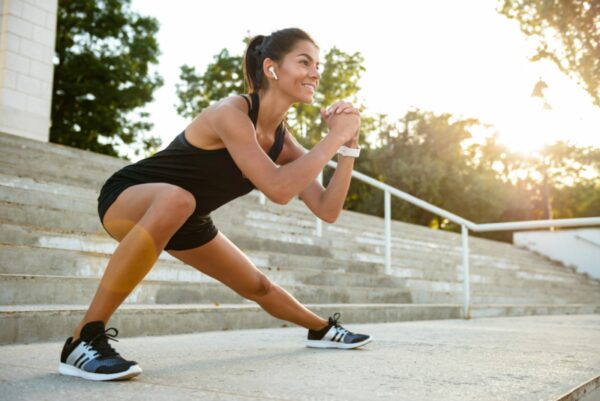
If you’ve been to physical therapy, you likely got a home exercise program. Research says that if you do your home exercise program, you’ll have a significantly better chance of meeting your goals and feeling better. Not doing your program increases the risk of recurrent injury or flare-ups with less positive outcomes long term. Even though they’re important, adherence to home exercise programs is terrible. It’s estimated that only 40 to 50% of patients do their exercises the way they’re supposed to. What can you do to make sure you do your exercises and get the best outcomes? Here are a few ideas.
Plan Ahead
Think about what’s going to get in your way – your schedule, that you’ll forget, or that you don’t have the space or equipment that you need. Once you figure out the problems, come up with solutions. Put your exercises in your schedule, talk to your PT about equipment, or adjusting your program to fit the time you have. If you solve problems before they start, they’re no longer problems.
Address Pain and Beliefs About The Exercise Program
You’ll need to work with your PT on these. If your exercises cause pain, you’re not going to do them. When your PT prescribes your exercises, try them out. If there’s pain, ask your PT about modifications to make them more comfortable.
The other thing that might need to be addressed are your beliefs. If you believe that the exercises won’t help, or that they’re a waste of time, you won’t do them. Again, work with your PT to understand why they’re prescribing those exercises, and what they’re meant to do. Once you know why you’re doing those exercises, you’re more likely to do them.
Get Support
People who have social support are more likely to do their exercises. This is why CrossFit and group exercise classes work. Find a family member or friend to help you stay consistent with your exercises. Your PT can help here too. Have someone ask if you’re doing your exercises, and how they’re going. This will keep you accountable and more likely to do them.
Use Technology
If you like technology and gadgets, they can help you be consistent with your exercises. There are plenty of apps that can track your exercise. Seeing that streak of days you’ve exercised will motivate you not to break it. Smartwatches and activity trackers can fill the same role. If you are one of our patients, we provide you with the technology to track and monitor your own compliance and progress within Keet. You can even communicate with your therapist, getting answers to questions and concerns to keep you motivated and committed to the program between visits.
If you want the best outcomes and the best that PT has to offer, doing your home exercise program will help you get the most out of PT. With a little planning and a little help, you can make sure you’re one of the 50% of the people who do their home exercises consistently to get the best outcomes.
*References:
https://pubmed.ncbi.nlm.nih.gov/32669487/
https://www.physio-pedia.com/Adherence_to_Home_Exercise_Program
Keep Reading…
The Big Toe – How Important Is It?
The forefoot consists of the five toes and their connecting long bones, the metatarsals. Each toe (phalanx) is made up of small bones called phalanges. The phalanges of all five toes are connected to the metatarsals by metatarsophalangeal (MTP) joints at the ball of the foot. During efficient walking and running, the forefoot bears half the body’s weight and balances pressure on the ball of the foot, and the big toe joint (first MTP joint) should take on the majority of the push off force for forward movement.
How your golf swing can lead to increased back pain
Those who play the game of golf know the physical strain it can place on the entire body especially the lower back. The last thing any golfer wants to do is to miss a few rounds of golf because of pain or injury. Anyone who watches golf on TV can tell you that the days when players were out of shape and overweight are gone. Nowadays, each player follows a rigorous training program to stay at the top of their game throughout the year. Here are a few tips to keep you at the top of your game.
SYRACUSE PHYSICAL THERAPIST JULIE BERUBE AWARDED ORTHOPAEDIC SPECIALIST CERTIFICATION
Julie Berube, PT, DPT, of Syracuse, New York, was awarded the professional designation of board-certified clinical specialist in orthopaedic physical therapy (OCS) by the American Board of Physical Therapy Specialties (ABPTS) of the American Physical Therapy Association (APTA).
To obtain board certification, candidates must submit evidence of 2000 hours of clinical practice in one of nine specialty areas: Cardiovascular and Pulmonary, Clinical Electrophysiology, Geriatrics, Neurology, Oncology, Orthopaedics, Pediatrics, Sports, and Women’s Health Physical Therapy. In addition, candidates must successfully complete a rigorous examination, demonstrating specialized knowledge and advanced clinical proficiency in a specialty area of physical therapist practice. As of 2016, approximately 5% of PT’s in the United States are board certified in orthopaedics, and Julie joins only 2.5% of physical therapists in New York State with an OCS certification.
Physical Therapist Expands Knowledge in Pelvic Floor Evaluation and Rehabilitation
On May 5, 2017 physical therapist Taryn Bader, PT, DPT of Onondaga Physical Therapy attended a full-day seminar in Syracuse, NY titled:
The Fundamentals of Pelvic Floor Rehabilitation
The course was six hours of educational material focused on
What is a diastasis recti?
Diastasis Recti is a condition that typically occurs following a pregnancy in which the two halves of your abdominal muscle splits. There may be a gap you can feel between the walls of the abdomen, usually around the belly button. Occasionally there may be a bulge present, depending on the size of the diastasis.
Can it be fixed?







